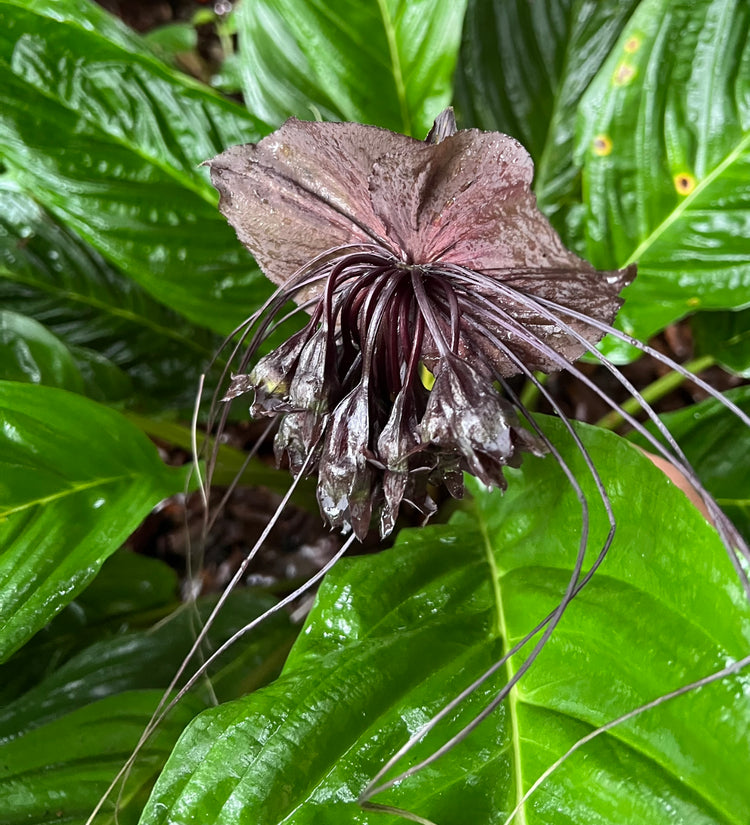Bat Plant 'Black' 45mm Pot (Baby Plant)
- Regular price
-
$15.00 - Regular price
-
- Sale price
-
$15.00
-
Hurry, only 2 items left in stock!
Couldn't load pickup availability
Shipping information

Product Details
Welcome to Plant&Leaf and our range of family grown plants. The first photo serves as a representative display, showcasing the beauty of a mature plant.
All of our plants are grown outdoors in nature and are exposed to the natural elements. Sometimes this means a leaf could have been chewed here and there or have a blemish or two – but we do our best to send the best plants we can on every order.
Bat plants, or Tacca chantrieri, are unique and exotic plants known for their striking flowers that resemble bat faces. Here are some tips for keeping them healthy:
-
Light: Bat plants prefer bright, indirect light. They do not thrive in direct sunlight, which can scorch their leaves. Place them in a location where they receive filtered light or dappled shade.
-
Temperature and Humidity: They prefer warm, humid environments. Aim for temperatures between 18°C to 27°C. Mist the plant regularly to increase humidity, especially if you live in a dry climate. Placing a humidity tray filled with water and pebbles beneath the plant can also help.
-
Watering: Keep the soil consistently moist but not waterlogged. Water thoroughly when the top inch of soil feels dry to the touch. Ensure good drainage to prevent root rot. Reduce watering slightly during the plant's dormant period in winter.
-
Soil: Use a well-draining, rich potting mix. A mix containing organic matter like peat moss or compost works well. You can also add perlite or sand to improve drainage.
-
Fertilization: Feed your bat plant with a balanced liquid fertilizer diluted to half strength every 2-4 weeks during the growing season (spring and summer). Avoid fertilizing during the dormant period.
-
Potting: Choose a pot that is slightly larger than the plant's current container. Repotting every 1-2 years is typically sufficient. Use fresh potting mix when repotting.
-
Pruning: Remove any dead or yellowing leaves to maintain the plant's appearance and health. Prune spent flowers to encourage new growth.
-
Pests and Diseases: Keep an eye out for pests such as aphids, spider mites, and mealybugs. If you notice any pests, gently wipe the leaves with a damp cloth or treat the plant with neem oil. Avoid overwatering to prevent root rot and fungal diseases.
-
Dormancy: Bat plants may go dormant in winter, during which they may lose some or all of their leaves. This is normal behavior. Reduce watering during this period and resume regular care when new growth emerges in spring.
By providing the right environment and care, you can enjoy the unique beauty of bat plants in your home or garden.


